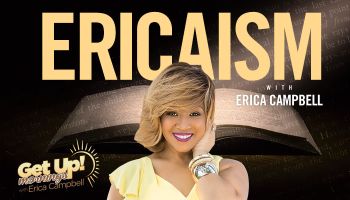By Martha Beck O, The Oprah Magazine
Long ago, so long ago that I was practically still a gill-breather, I noticed a magazine ad that claimed the average person earns $700,000 over an entire lifetime. I have no idea how they came to that number, but I never forgot the words splashed in big, bold letters across the page:
WHAT WILL YOU DO WITH YOUR $700,000?
Calculating Satisfaction
My financial planning starts with temporarily ignoring the market value of an item and assessing its “psychic value.” This isn’t as mysterious as it sounds. Economists use the term psychic income to represent the satisfaction we get from a product or experience. To calculate the psychic value of an item, you just need to ask, “How would purchasing this thing affect my life?” The answer will vary wildly from person to person. For example, I’ve found that real diamonds give me not one whit more satisfaction than fake ones. If you’re scandalized by this confession, real diamonds must matter to you. For you, wearing even the nicest zirconium may feel like a shameful lie. I don’t understand this, but I accept it.
On the other hand, when my golden retriever’s knees gave out, I paid $12,000 for their surgical repair without a second thought. Even a cursory financial assessment would reveal that this dog produces no useful goods or services whatsoever, and that instead of having him bionically enhanced, I should have whacked him over the head with a shovel. But Bjorn is to me what diamonds are to whoever wrote that song: a girl’s best friend.
My point is that psychic value comes from our unique inner responses, which means you need to get in touch with your own heart’s desires. You might learn that you value (or devalue) something simply because others do, but I think you’ll find you already know what you consider the psychic value of everything—all the way from worthless to priceless.
Introducing the Matrix
Allow me to explain.
I have a fabulous friend I’ll call Eve, who bootstrapped herself from dirt-poor beginnings to considerable wealth. When contemplating a purchase, Eve asks, “Do I really NEED this?” Then she asks, “Do I really LOVE it?” If the answer to both questions is no, then however inexpensive an item may be, she won’t buy it.
I’m using capital letters because Eve pushes the definitions of need and love much further than most people. Having survived abject poverty, she knows (as some wealthy people don’t) that she doesn’t actually require an indoor polo field or, for that matter, an iPod, though she could afford both. She also believes that once her needs are met, she shouldn’t waste one penny or one second on anything she doesn’t LOVE.
Not just love. LOVE. There’s a difference.
This system has given Eve a dazzling joy dividend. Her closet contains no clothes she doesn’t adore. Her history brims with people, places, and activities she is totally and completely crazy about. Every dollar of her fortune (way more than $700,000, I assure you) has been spent on things she’ll never tire of. I’m not as disciplined as Eve, but to the extent that I imitate her, I find myself reaping maximum psychic return on my own investments.
When you assess psychic value as Eve does, ruthlessly culling all but the deepest needs and the highest loves, potentially complex financial trade-offs fall into a manageable two-by-two matrix that looks like this:
As you can see, I recommend you pay top dollar for things in category 1, bottom dollar for things in category 2, and all your remaining money for things in category 3. Don’t spend a red cent for anything in category 4.
Leveraging the Matrix
Of course, each week you and I carefully assess our income, expenses, retirement needs, and risk of illness or accident, then draw up a judicious budget that we honor religiously. After that, we flap our arms and fly to Jupiter, where we meet with other financially competent people to discuss hedge funds.
Not.
Here’s the truth: Twice a year I meet with my wonderful accountant, Gary, who loves his job the way I love breathing. Gary meticulously walks me through my finances, which I think takes about an hour. I’m guessing, because after ten minutes, I fall deeply, deeply asleep. Everywhere else in the world I’m an insomniac, but Gary’s office is to me what the poppy field was to Dorothy in The Wizard of Oz.
Eventually, Gary gently shakes me back into consciousness and makes sure I have a vague sense of how much I can afford to spend each month. Then he returns me to the real world, where I encounter financial decisions not as tidy equations but as chaotic demands: “Your dog needs bionic knees! Think fast!” In moments like this, I use my four-square system to make each decision. Here’s how it works:
Start by writing a list of all the things you’re spending money on. If a product or service falls in squares 1 or 2—in other words, if you really, truly need it—you must budget for it before buying anything extra. (I’d encourage you to ask yourself how things like retirement savings and health insurance will affect your quality of life; they may not be exciting, but if you’re honest, you’ll probably find you need them.) At the end of the exercise, you’ll have two categories of needed items: things you love and things you don’t.
Start with category 2 and purchase the need-but-don’t-love items. This is where, as Gary says, you should “care enough to pay the very least.” Buy the generic medication. Use coupons. Haggle. Pinch pennies until they scream for mercy. Having saved all you can on category 2, move on to items you both need and love. In this category, buy the best things you can afford. Be lavish. Don’t worry about what other people say is a great value or a waste of money; check with yourself.
For instance, I obviously need food, and of course I love it; I find there’s nothing like it when you’re hungry, but I don’t love it the way true foodies do. So I spend very little on my meals. On the other hand, I both need and love a user-friendly computer, so I invest in deluxe, state-of-the-art, turbocharged models. My friend Sheila recently admitted she really needs to have a computer, though she definitely doesn’t love it. She got a steal on a pre-owned model that’s a bit slower and clunkier than mine. We both made the right choice to maximize our own amount of joy.
Adding the Zest, Avoiding the Rest
One of my favorite cartoons captures this fabulously: In it, a bald, ascetic Zen monk asks his fellow ascetic, “Do you ever wish you had some stuff?” People who don’t consciously renounce unneeded, unloved purchases end up getting, you know, stuff. Often, piles of mediocre, creeping stuff that actually decreases their quality of life.
You can avoid this by making conscious love-don’t-need purchases. These choices put the zest into life. The very first thing I bought this way—back when I was an impoverished student—was a philodendron for my new, tiny, airless office. I paid $2.98 for the plant, then panicked and skipped a meal to compensate. That was just nerves: A $3 splurge did fit into my budget, and that cheerful emerald life-form brightened my mood each time I reached my office after a slog through the dark, freezing Cambridge winter (at the time, I didn’t need a car, so I spent years investing in galoshes before investing in wheels).
These days my love-but-don’t-need treats include things like coffee shop drinks that cost more than donated plasma. Yes, I know I could home-brew for less. Some friends of mine bought an espresso machine they adore so much they accepted it as a third party in their marriage. I purchased a similar machine, aiming to save money. Now I pass it on my way out to buy ludicrously overpriced mochaspressomacchiaticcinos.
So…once more, with feeling: Getting the maximum amount of joy in your life depends on listening to your true self, not fads, crazes, sales pitches, or the Joneses. Today vast numbers of smart people are pursuing chunks of your $700,000 (or whatever that number is in 2010 dollars). They may lead you into all sorts of less-than-ideal financial decisions—and not just overspending. They may convince you to focus solely on maximizing your 401(k) to the exclusion of all else. But real value isn’t about bank balances; it’s about fulfillment, gusto, delight. Whether you’re sitting on $700,000 or $7, invest it wisely. Bargain for your true needs, celebrate your true loves, and watch your life’s true net worth start climbing.












